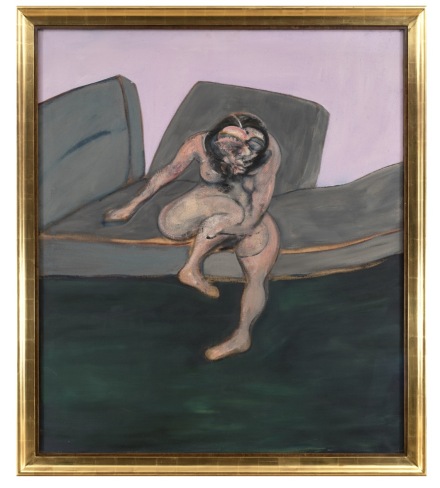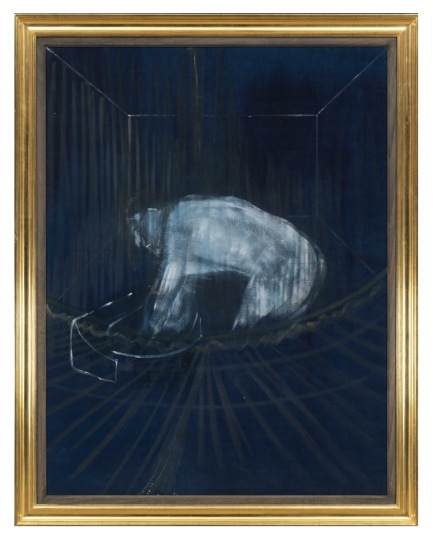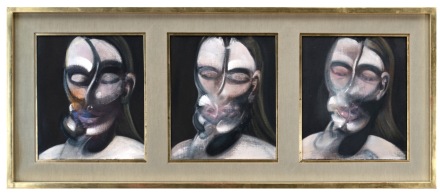
Francis Bacon, Seated Woman (1961), via Skarstedt
On view this summer, Skarstedt has assembled a striking selection of work by painter Francis Bacon, titled Faces and Figures. The exhibition unifies a group of masterworks spanning the 1950s to the 1970s. Featuring depictions of some of his most beloved friends, lovers, and muses—Peter Lacy, George Dyer, Muriel Belcher, and Henrietta Moraes—along with an intimate self-portrait and a portrait of Pope Pius XII, the exhibition traces poignant moments of loss and companionship that underscores the artist’s masterful blending of art and life.

Francis Bacon, Man at a Washbasin (1954), via Skarstedt
Bacon frequently depicted his lovers in his work, and the works on view here make that depiction a priority. Peter Lacy, the first of Bacon’s lovers to appear in his paintings, is represented here through Man at a Washbasin (c. 1954) and Seated Figure on a Couch (1959), both expressing the tension and violence that were a part of the pair’s fraught relationship, expressing a hunched, almost animalistic posture while the striations of white around him cage him into his surroundings. By contrast, the artist’s works depicting George Dyer takes on a lighter, more fluid and poetic hand. Three Studies for Portrait of George Dyer (on light ground) (1964) was executed within a year of their first meeting and is the second painting in Bacon’s oeuvre to name Dyer as the subject. The softer color palette lends an unusual sense of lightness to the work that reveals Bacon’s deep infatuation with Dyer, and these tones reoccur again in a more somber manner in Figure in Movement (1972). Painted the year after Dyer’s tragic suicide on the eve of Bacon’s retrospective at the Grand Palais in Paris, Dyer’s form appears in a state of transition as Bacon grappled with this most painful loss.

Francis Bacon, Study for a Head (1955), via Skarstedt
Other works depict the women that served as central figures in his works, and recurring models. Henrietta Moraes appears in Study of Henrietta Moraes Laughing (1969) and Three Studies for a Portrait (1976). Three Studies for a Portrait is the penultimate portrait of this muse, and the bisection of her face in each panel echoes the composition of Study of Henrietta Moraes Laughing. In fact, Study of Henrietta Moraes Laughing was instrumental to the development of Three Studies for a Portrait; this will be the first time the two works are shown side-by-side. Both were inspired by a fleeting moment in the 1959 film Hiroshima Mon Amour, in which the lead actress appears with a piece of hair across her face. Here, Bacon uses it as a compositional device to split Moraes’s face in two while evoking the love, loss, and despair latent in the film and his own life.

Francis Bacon, Three Studies for a Portrait (1976), via Skarstedt
Also of note on view here are Bacon’s Popes, perhaps his most iconic work, and present the artist working through a range of emotive and expressive imageries that underscore the artist’s interpretation through a series of interpolations, even inserting what many consider his own face into the works, turning his paintings into a series of explorations on both the self and his relation to his works. Showcasing how Bacon constructed meticulous and expressive meditations on his life and his art, the show is a remarkable look at the artist’s process.
It closes June 25th.
– D. Creahan
Read more:
Francis Bacon at Skarstedt [Exhibition Site]



